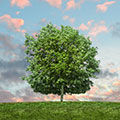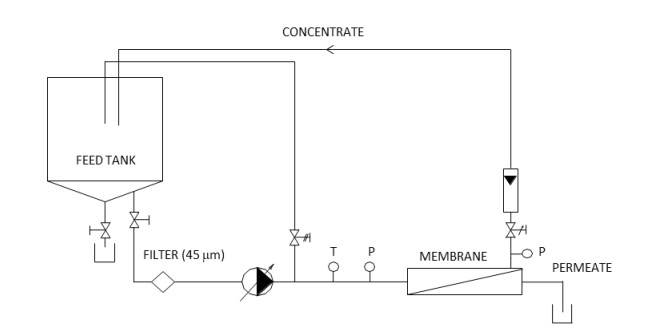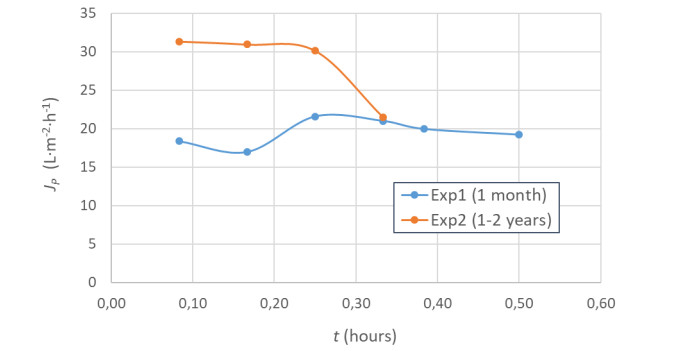1.
Introduction
The noncommutative residue, also known as great important study subject in noncommutative geometry, has been extensively studied in [1,2]. In [3], Connes employed the noncommutative residue to derive a four-dimensional conformal Polyakov action analogue and demonstrated that the noncommutative residue on a compact manifold M coincides with the Dixmier's trace for pseudodifferential operators of order−dimM in [4]. Moreover, Connes claimed the noncommutative residue of the square of the inverse of the Dirac operator was proportional to the Einstein–Hilbert action. Kastler, Kalau, and Walze proved this conclusion respectively in [5,6], which is called the Kastler–Kalau–Walze theorem. Afterwards, Ackermann proved that the noncommutative residue of the square of the inverse of the Dirac operator Wres(D−2) in turn is essentially the second coefficient of the heat kernel expansion of D2 in [7], which enriches the results on noncommutative residues on manifolds without boundary.
Furthermore, Wang uses ~Wres[(π+D−1)2] instead of Wres(D−2) to generalize the results from manifolds without boundary to manifolds with boundary in [8,9], and proved the Kastler–Kalau–Walze-type theorem for the Dirac operator and the signature operator on lower-dimensional manifolds with boundary [10]. Here ~Wres denotes the noncommutative residue for manifolds with boundary, and π+D−1 is an element in Boutet de Monvel's algebra (see (3.1) in Section 3.1). In [10,11], Wang computed ~Wres[π+D−1∘π+D−1] and ~Wres[π+D−2∘π+D−2] for symmetric operators, where the boundary term vanished in these cases. However, when computing ~Wres[π+D−1∘π+D−3], a nonvanishing boundary term emerged [12], leading Wang to provide a theoretical interpretation of gravitational action on the boundary. In other words, this work effectively established a framework for investigating the Kastler–Kalau–Walze-type theorem on manifolds with boundary.
Subsequent studies [13,14,15,16,17,18] explored various perturbations of the Dirac operator by zero-order differential operators. In [15], Wang extended the Kastler–Kalau–Walze-type theorem for perturbations of Dirac operators on compact manifolds (with or without boundary) and proposed two distinct operator-theoretic interpretations of boundary gravitational action. Further developments by Wang, Wang, and Yang [17] ocused on 4-dimensional compact manifolds with boundary, where they derived two operator-theoretic explanations for gravitational action and proved a Kastler–Kalau–Walze-type theorem for nonminimal operators on complex manifolds. Additionally, in [16], Wang, Wang, and Wu introduced novel spectral functionals, which extended traditional spectral functionals to noncommutative realm with torsion and connected them to the noncommutative residue for manifolds with boundary.
The semiclassical limit not only connects quantum and classical physics theoretically but also provides important research tools and application value in the field of mathematics. In physics, the semiclassical limit refers to the transitional regime between quantum mechanics and classical mechanics. When the characteristic action ˉS of a system is much larger than Planck's constant ℏ, quantum effects gradually diminish, and the system's behavior approaches that of classical mechanics. In mathematics, this is often achieved by taking the limit where Planck's constant ℏ→0.
There are many studies on the semiclassical limit of the spectral geometry. B¨ar and Pf¨affle studied semiclassical approximations for the heat kernel of a general self-adjoint Laplace-type operator within a geometric framework in [19]. Later, Ludewig [20] examined the semiclassical asymptotic expansion of the heat kernel arising from Witten's perturbation of the de Rham complex by a given function. By employing the stationary phase method, Ludewig derived a time-dependent integral formula, ultimately leading to a proof of the Poincarˊe-Hopf theorem. Meanwhile, Savale [21] analyzed the remainder term in the semiclassical limit formula (introduced in [22]) for the eta invariant on a metric contact manifold. Specifically, Savale demonstrated that this remainder term is governed by the volumes of recurrence sets of the Reeb flow. Obviously, the noncommutative residues as a part of the spectral geometry; thus, in order to extend the study of the semiclassical limit of the spectral geometry, motivated by [19,20,21] and Theorem 3.12 in [23], we introduce the semiclassical limit into the noncommutative residue. Based on the research of [24], we prove the semiclassical limit of the Kastler–Kalau–Walze-type theorem for the perturbations of the Dirac operator on 4-dimensional compact oriented spin manifolds with (without) boundary by taking the limit ε→0. For a fixed ε>0, we may consider the Kastler–Kalau–Walze-type theorem as a theorem in the quantum state. And when ε→0, we give the classical state of the Kastler–Kalau–Walze-type theorem.
This paper is organized as follows: By using Wres(P):=∫S∗Mtr(σP−n)(x,ξ), Section 2 gives semiclassical limits of the noncommutative residues of three cases for the perturbations of the Dirac operator on 4-dimensional manifolds without boundary. Moreover, we give the semiclassical limit of the Kastler–Kalau–Walze-type theorem about the perturbation of the Dirac operator on 4-dimensional manifolds with boundary in Section 3.
2.
The semiclassical limits of the noncommutative residue on 4-dimensional manifolds without boundary
In this section, we study the semiclassical limits of the noncommutative residues on 4-dimensional manifolds without boundary in three different cases.
Firstly, we recall the main facts regarding the Dirac operator D. Let M be a 4-dimensional compact oriented spin manifold with Riemannian metric g, and let ∇ denote the Levi–Civita connection associated with g. Then the Dirac operator D can be expressed locally in terms of an orthonormal frame ei (with corresponding dual coframe θk) of the frame bundle of M [5]:
where the γij,k represents the Levi–Civita connection ∇ with spin connection ˜∇, the γi denote constant self-adjoint Dirac matrices, which satisfy γiγj+γjγi=−2δij.
Using local coordinates xμ that induce the alternative vierbein ∂μ=Siμ(x)ei (with dual vierbein dxμ), γiei=γμ∂μ is obtained, where the γμ are now x-dependent Dirac matrices, which satisfy γμγν+γνγμ=−2gμν (we use Latin sub-(super-) scripts for the basic ei and Greek sub-(super-) scripts for the basis ∂μ, the type of sub-(super-) scripts specifying the type of Dirac matrices). Then the Dirac operator in the Greek basis is expressed by
Consider a pseudodifferential operator P that acts on sections of a vector bundle over a compact Riemannian manifold M. In [5], the noncommutative residues of P is defined by
where ξ∈Sn−1and tr denotes shorthand for trace.
Next, by (2.1), to obtain the semiclassical limit of the noncommutative residues on manifolds without boundary, we consider the following three different cases. From the point of view of the following three different cases, we give the classical state of the noncommutative residue on manifolds without boundary.
where λ1,λ2 are C∞(M) functions.
2.1. The first case: limε→0ε3Wres(εD2+λ1D+λ2)−1
In this subsection, we want to compute limε→0ε3Wres(εD2+λ1D+λ2)−1, by ε3Wres(εD2+λ1D+λ2)−1=ε2Wres(D2+λ1εD+λ2ε)−1, we need to compute Wres(D2+λ1εD+λ2ε)−1.
Set A=D2+λ1εD+λ2ε, we utilize the composition of pseudodifferential operators to express the symbol of the operator. Simplify the abbreviation of the principal symbol: ξ=∑jξjdxj, ∂αξ=∂α/∂ξα,∂xα=∂α/∂xα, then the following identity holds:
Firstly, we compute the total symbol σ(x,ξ) of A, which is given by the sum of terms Ak of order k(k=0,1,2):
Then, we have
Next, we compute A−1 from order -4 to order -2 using the above results; that is, σA−1−k,k=2,3,4. The full symbol σ of A is expressed in terms of decreasing order:
Using (2.2), the negative order of the symbol of A−1 yields:
Moreover, by (2.3), the following result is obtained.
Regrouping the terms and inserting
We obtain for σA−1−4 the sum of terms:
and
Let s denote the scalar curvature, from [5], we obtain
The next step involves computing ∫|ξ|=1tr[∑7i=1Mi]σ(ξ).
(1):
In normal coordinates, using the facts: Γμαβ(x0)=σμ(x0)=0, ∂xμgαβ(x0)=0, the results of the terms M1, M2, M3, and M6 disappear.
(2):
and
(3):
By ∂xμ[|ξ|−4c(ξ)]=−2|ξ|−6∂xμ(|ξ|2)c(ξ)+|ξ|−4∂xμ[c(ξ)], ∂xμ(|ξ|2)(x0)=0 and ∂xμ[c(ξ)]=0, we have
Therefore, when n=4, trS(TM)[id]=4 and by (2.1), this implies
Further, we obtain the semiclassical limit of the above result. That is the following theorem.
Theorem 2.1. If M is a 4-dimensional compact oriented spin manifolds without boundary, then we derive the semiclassical limit of the noncommutative residue about εD2+λ1D+λ2
Corollary 2.2. If M is a 4-dimensional compact oriented spin manifolds without boundary, then when λ1=√ε, we obtain the following equality:
2.2. The second case: limε→0ε3Wres(εD2+λ1c(X)D+λ2)−1
Let c(X) denote a Clifford action on M, where X=∑nα=1aαeα=∑nj=1Xj∂j is a vector field. Then we can set B=D2+λ1εc(X)D+λ2ε, the next step is to compute the total symbol σ(x,ξ) of B; the sum of terms Bk of order k(k=0,1,2) is given by:
By (2.2), we have
Next, we compute B−1 from order -4 to order -2 using the above results; that is, we compute σB−1−k,k=2,3,4. the full symbol σ of B is expressed into terms of decreasing order:
Using (2.2), the negative order of the symbol of B−1 yields:
Then by (2.5), it follows that
Regrouping the terms and inserting
Then σB−1−4 includes the sum of terms: N1−N10 and R1−R7:
Then, similarly, we compute ∫|ξ|=1tr[∑7i=1Ri]σ(ξ).
(1):
In normal coordinates, using the facts, we have: Γμαβ(x0)=σμ(x0)=0, ∂xμgαβ(x0)=0, the results of the terms R1, R2, R3, and R6 disappear.
(2):
and
Then by ∫|ξ|=1ξ(X)2σ(ξ)=−12|X|2π2tr[id], we have
(3):
(4):
By ∂μx[c(X)c(ξ)](x0)=c(X)∂μx[c(ξ)]+∂μx[c(X)]c(ξ)=∑nj=1∂μx(Xj)c(ej)c(ξ)(x0), we have
Then
where divM denotes divergence of M.
Thus by (2.1), we obtain the following result:
Further, we obtain the following theorem.
Theorem 2.3. If M is a 4-dimensional compact oriented spin manifolds without boundary, then we derive the semiclassical limit of the noncommutative residue about εD2+λ1c(X)D+λ2
Corollary 2.4. If M is a 4-dimensional compact oriented spin manifolds without boundary, then when λ1=√ε, the following equality holds:
2.3. The third case: limε→0ε3Wres(εD2+λ1∇S(TM)X+λ2)−1
Define ∇S(TM)X:=X+14∑ij⟨∇LXei,ej⟩c(ei)c(ej), which is a spin connection. And let gij=g(dxi,dxj) and ∇L∂i∂j=∑kΓkij∂k, we denote that
Set C=D2+λ1ε∇S(TM)X+λ2ε, E(X)=14∑ij⟨∇LXei,ej⟩c(ei)c(ej). The next step is to compute the total symbol σ(x,ξ) of C−1 from order -4 to order -2, with C the following sum of terms Ck of order k:
Then, we have
Further, by (2.2), we obtain
Regrouping the terms and inserting
We obtain for σC−1−4 the sum of terms: N1−N10 and T1−T7:
Then, we proceed to compute ∫|ξ|=1tr[∑7i=1Ti]σ(ξ).
(1):
In normal coordinates, using the facts: Γμαβ(x0)=σμ(x0)=0, ∂xμgαβ(x0)=0, the results of the terms T1, T2, T3, and T6 disappear.
(2):
By ∫|ξ|=1ξjξkσ(ξ)=14VolS3δjk=12π2δjk, we have
(3):
(4):
Similar to (2.7), we have
Thus, we obtain the following result:
Building on these preliminaries, we obtain:
Theorem 2.5. If M is a 4-dimensional compact oriented spin manifolds without boundary, then we obtain the semiclassical limit of the noncommutative residue about εD2+λ1∇S(TM)X+λ2
Corollary 2.6. If M is a 4-dimensional compact oriented spin manifolds without boundary, then when λ1=√ε, we obtain the following equality:
3.
The semiclassical limit of the Kastler–Kalau–Walze-type theorem on 4-dimensional manifolds with boundary
In this section, we study the semiclassical limit of the Kastler–Kalau–Walze-type theorem for the perturbation of the Dirac operator on 4-dimensional manifolds with boundary, that is, to compute limε→0ε4~Wres[π+(εD+c(X))−1∘π+(εD+c(Z))−1].
3.1. Boutet de Monvel's calculus
In this subsection, we recall some fundamental concepts and key formulas about Boutet de Monvel's calculus, along with the definition of the noncommutative residue for manifolds with boundary. These preliminaries will be essential for our subsequent analysis. For a more comprehensive treatment of these topics, we refer readers to Section 2 in [10].
Denote by π+ (resp. π−) the projection on H+ (resp. H−). Let ˜H={rational functions having no poles on the real axis}. Then for h∈˜H,
where Γ+ is a Jordan closed curve included in Im(ξ)>0 surrounding all the singularities of h in the upper half-plane and ξ0∈R. Similarly, we define π′ on ˜H,
So π′(H−)=0.
For h∈H⋂L1(R),
and for h∈H+⋂L1(R), π′h=0.
Let G, T be, respectively, the singular Green operator and the trace operator of order m and type d. Let K be a potential operator and S be a classical pseudodifferential operator of order m along the boundary. An operator of order m∈Z and type d is a matrix
where M is a manifold with boundary ∂M and E1,E2 (resp. F1,F2) are vector bundles over M (resp. ∂M). Here, P:C∞0(Ω,¯E1)→C∞(Ω,¯E2) is a classical pseudodifferential operator of order m on Ω, where Ω is a collar neighborhood of M and ¯Ei|M=Ei(i=1,2). P has an extension: E′(Ω,¯E1)→D′(Ω,¯E2), where E′(Ω,¯E1)(D′(Ω,¯E2)) is the dual space of C∞(Ω,¯E1)(C∞0(Ω,¯E2)). Let e+:C∞(M,E1)→E′(Ω,¯E1) denotes extension by zero from M to Ω, and r+:D′(Ω,¯E2)→D′(Ω,E2) denotes the restriction from Ω to X; then define
In addition, P is supposed to have the transmission property; this means that, for all j,k,α, the homogeneous component pj of order j in the asymptotic expansion of the symbol p of P in local coordinates near the boundary satisfies
then π+P:C∞(M,E1)→C∞(M,E2) by Theorem 4 in [25] page 139.
Denote by B the Boutet de Monvel's algebra. We recall that the main theorem is in [10,26].
Theorem 3.1. [26] (Fedosov-Golse-Leichtnam-Schrohe) Let M and ∂M be connected, dimM=n≥3, and let S (resp. S′) be the unit sphere about ξ (resp. ξ′) and σ(ξ) (resp. σ(ξ′)) be the corresponding canonical n−1 (resp. (n−2)) volume form. Set ˜A=(π+P+GKTS) ∈B, and denote by p, b and s the local symbols of P,G, and S, respectively. Define:
where ~Wres denotes the noncommutative residue of an operator in the Boutet de Monvel's algebra, and
in the normal coordinate,
Then a) ~Wres([˜A,B])=0, for any ˜A,B∈B; b) It is the unique continuous trace on B/B−∞.
Definition 3.2. [10] Lower-dimensional volumes of spin manifolds with boundary are defined by
and
where
and the sum is taken over r+l−k−|α|−j−1=−n,r≤−p1,l≤−p2.
3.2. The interior term of limε→0ε4~Wres[π+(εD+c(X))−1∘π+(εD+c(Z))−1]
By ε4~Wres[π+(εD+c(X))−1∘π+(εD+c(Z))−1]=ε2~Wres[π+(D+c(X)ε)−1∘π+(D+c(Z)ε)−1] and (3.3), we first compute
where
and the sum is taken over r+l−k−j−|α|=−3,r≤−1,l≤−1.
Since [σ−n(D−p1−p2)]|M has the same expression as σ−n(D−p1−p2) in the case of manifolds without boundary, so locally we can compute the interior term by [5,6,10,27].
Set V=D2+c(Z)Dε+Dc(X)ε+c(Z)c(X)ε2, where Z=∑nα=1aαeα=∑nj=1Zj∂j is a vector field. The next step is to compute the total symbol \sigma(x, \xi) of V^{-1} from order -4 to order -2, with V the following sum of terms V_k of order k :
By (2.2) and the composition formula of pseudodifferential operators, \sigma^{V^{-1}}_{-4} is obtained, which include the sum of terms N_1-N_{10} and F_1-F_{7} :
Next, we proceed to compute \int_{|\xi| = 1}{\rm tr}[\sum_{i = 1}^{7}F_i]\sigma(\xi).
\mathbf{(1):}
In normal coordinates, using the facts: \Gamma^\mu_{\alpha\beta}(x_0) = \sigma_\mu(x_0) = 0, \partial_\mu^xg^{\alpha\beta}(x_0) = 0, the terms F_1, F_2, F_3 , and F_6 disappear.
\mathbf{(2):}
By (2.6), we have
Then
\mathbf{(3):}
\mathbf{(4):}
By (2.7), we have
Therefore, we obtain the following result
Further, above observations yields the following theorem
Theorem 3.3. If M is a 4 -dimensional compact oriented spin manifolds without boundary, then we derive the following equality:
3.3. The boundary term of \lim_{\varepsilon\rightarrow0}\varepsilon^4{ \widetilde{Wres}}[\pi^+(\varepsilon D+c(X))^{-1}\circ \pi^+(\varepsilon D+c(Z))^{-1}]
In this subsection, we proceed to calculate the boundary term: \int_{\partial M} \Phi . From [10], some symbols associated with these operators can be expressed.
Lemma 3.4. The positive order symbol of D+\frac{c(Z)}{\varepsilon} holds:
Then, utilizing the composition formula of pseudodifferential operators, we arrive at the following lemma.
Lemma 3.5. The negative order symbol of \bigg(D+\frac{c(Z)}{\varepsilon}\bigg)^{-1} holds:
By computations, we obtain the semiclassical limit of the Kastler–Kalau–Walze-type theorem.
Theorem 3.6. Let M be a 4 -dimensional oriented compact manifold with boundary \partial M , then
In particular, as the semiclassical limit is taken, the boundary term goes to zero.
Proof. For n = 4 , the summation condition r+l-k-j-|\alpha| = -3, \; \; r\leq -1, \; \; l\leq-1, it leads to the following five cases:
case a) When r = -1, \; l = -1, \; k = j = 0, \; |\alpha| = 1 .
By (3.6), we obtain
For i < n , we obtain
so \Phi_1 = 0 .
case b) When r = -1, \; l = -1, \; k = |\alpha| = 0, \; j = 1 .
From (3.6), we obtain
Applying Lemma 3.5 yields
Using the Clifford algebra relations and the trace property {\rm tr}{ab} = {\rm tr }{ba} , we obtain:
Then, we obtain
where {\rm \Omega_{3}} is the canonical volume of S^{2}.
case c) When r = -1, \; l = -1, \; j = |\alpha| = 0, \; k = 1 .
From (3.6), we obtain
Applying Lemma 3.5 yields
Similar to \rm case b) , we obtain
and
Thus, we obtain
case d) When r = -2, \; l = -1, \; k = j = |\alpha| = 0 .
From (3.6), we obtain
Denote
Then applying Lemma 3.5 yields
where
and
Since
Using the Clifford algebra relations and the trace property {\rm tr}{ab} = {\rm tr }{ba} , we obtain:
By (3.7) and (3.9), we have
By (3.8) and (3.9), we have
and
When i < n, \; \int_{|\xi'| = 1}\xi_{i_{1}}\xi_{i_{2}}\cdots\xi_{i_{2d+1}}\sigma(\xi') = 0 , so g(X, \xi') has no contribution for computing \rm case d) . Thus, we obtain
Thus
case e) When r = -1, \; l = -2, \; k = j = |\alpha| = 0 .
Since
From (3.6), we obtain
Applying Lemma 3.5 yields
Since
Further
By computations, we have
We denote
then
By (3.10) and (3.12), we have
Then
Then, using the Clifford algebra relations and the trace property {\rm tr}{ab} = {\rm tr }{ba} , we obtain:
By (3.10) and (3.11), we have
When i < n, \; \int_{|\xi'| = 1}\xi_{i_{1}}\xi_{i_{2}}\cdots\xi_{i_{2d+1}}\sigma(\xi') = 0 and g(Z, \xi') has no contribution for computing \rm case e) , we have
Therefore
Now \Phi can be expressed as the sum of the case a)–case e),
Finally, we obtain
By Theorem 3.3, Theorem 3.6 holds. □
Use of AI tools declaration
The authors declare they have not used Artificial Intelligence (AI) tools in the creation of this article.
Acknowledgments
This first author was supported by NSFC. No.12401059 and the Liaoning Province Science and Technology Plan Joint Project 2023-BSBA-118. The second author was supported by NSFC. No.11771070. The authors thank the referee for his (or her) careful reading and helpful comments.
Conflict of interest
The authors declare there are no conflicts of interest.
















 DownLoad:
DownLoad: